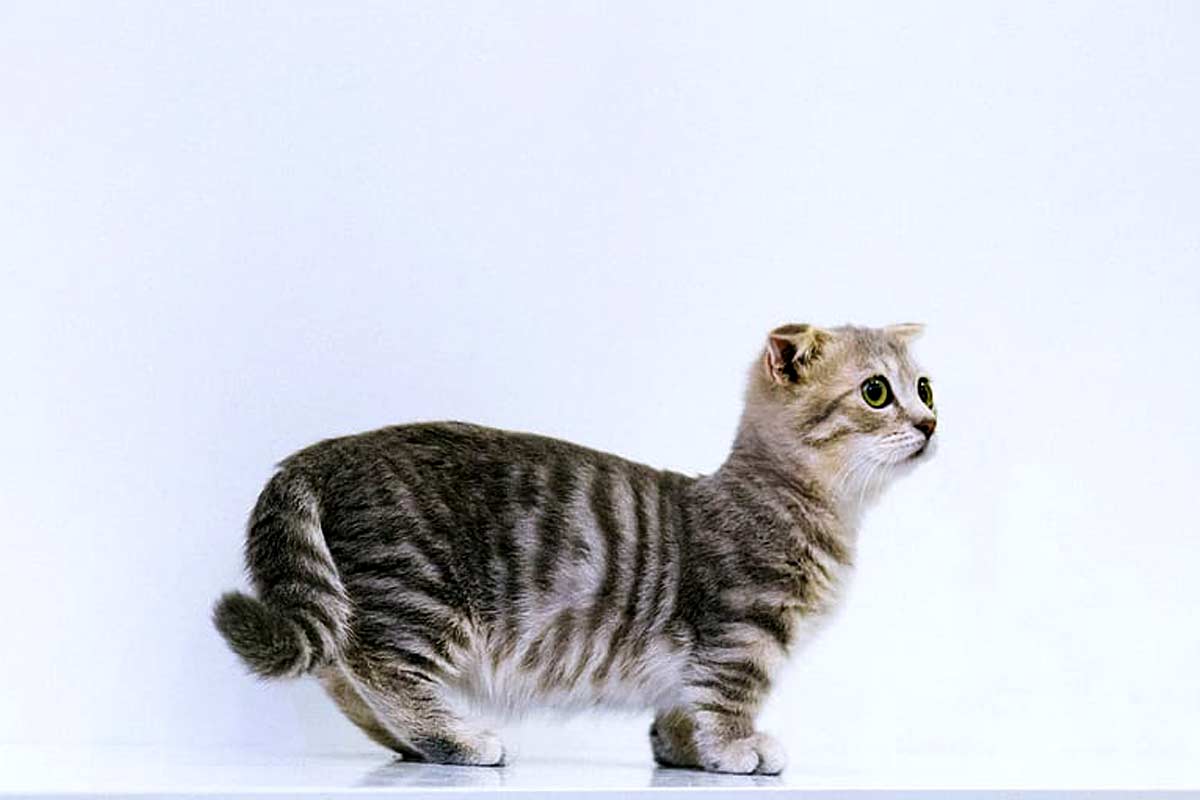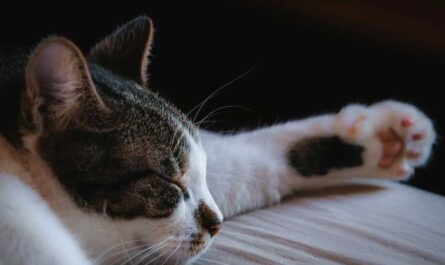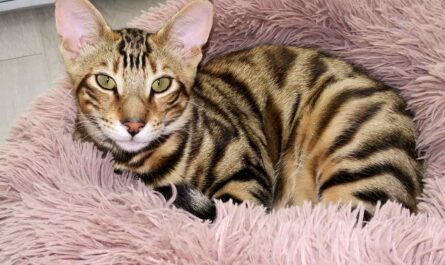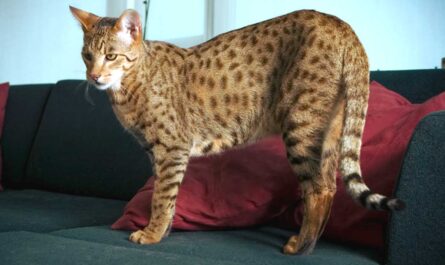How to stop a cat from spraying outside? Cats are wonderful companions, but when they start spraying outside of their litter box, it can be a frustrating and unpleasant experience for both the cat owner and the neighbors. Cat spraying, which involves the release of strong-smelling urine, is a natural behavior for marking territory or expressing stress. However, when it occurs outside the home, it can become a nuisance. Understanding the reasons behind this behavior is crucial in finding effective solutions.
How to stop a cat from spraying outside
Before attempting to stop a cat from spraying, it’s essential to rule out any underlying medical issues that may be contributing to the behavior. Once health concerns are addressed, a combination of environmental changes, positive reinforcement, and patience can be employed to discourage spraying. This article will explore practical strategies to modify your cat’s behavior, creating a harmonious living environment for both you and your feline friend. By implementing these techniques, you can help your cat feel more secure and reduce the likelihood of spraying outside the litter box. Here are some tips on how to stop a cat from spraying outside:
1. The Crucial Decision: Neutering/Spaying for Preventing Spraying
In the realm of responsible pet ownership, the decision to neuter or spay your cat emerges as a pivotal choice—a proactive measure that stands as the single most effective strategy to prevent spraying behavior. This surgical intervention doesn’t just address the physical aspects of reproduction; it strategically eliminates hormonal urges, significantly reducing the likelihood of spraying in both male and female cats.
Timing becomes a crucial factor in this decision-making process. Ideally, opting for neutering or spaying should be done early, preferably before the cat reaches sexual maturity, which typically occurs around 6 months of age. By taking this preventive step, the caregiver not only contributes to population control but also curtails the development of spraying behaviors that can arise from hormonal changes associated with mating instincts.
In this responsible approach to feline care, the caregiver becomes a guardian of both the cat’s well-being and harmonious cohabitation. Neutering or spaying is not just a surgical procedure; it’s a strategic investment in preventing unwanted behaviors, ensuring a healthier and more balanced life for the cat, and fostering a more harmonious living environment for both the feline and their human companions.
2. Unveiling the Underlying: Addressing Medical Issues
In the intricate tapestry of feline behavior, spraying can often be a symptomatic expression of underlying medical issues. The caregiver, in their role as a vigilant custodian of the cat’s well-being, must embark on a journey of uncovering potential health concerns that might be triggering this behavior.
Urinary tract infections and bladder stones emerge as potential culprits, causing discomfort that can manifest in spraying behaviors. The caregiver becomes a detective, attuned to the subtle cues of the cat’s distress, and seeks professional guidance to rule out these medical issues. Consulting a veterinarian becomes an essential step in this investigative process.
In this medical odyssey, the caregiver assumes the role of an advocate for the cat’s health. The veterinarian becomes a trusted ally, conducting examinations, and diagnostic tests, and providing insights into potential medical issues. Addressing these underlying concerns not only alleviates the cat’s discomfort but also serves as a proactive measure to curb unwanted spraying behaviors.
The caregiver, armed with this holistic understanding of their cat’s health, becomes a partner in the feline’s well-being. By addressing medical issues, the caregiver not only mitigates the immediate problem but also contributes to the cat’s overall health and happiness, fostering a dynamic relationship built on trust and attentive care.
3. The Lavish Convenience: Multiple Clean Litter Boxes
In the grand architecture of feline amenities, the provision of multiple clean litter boxes emerges as a luxurious convenience—a thoughtful gesture that goes beyond mere functionality. Ensuring that these feline facilities are not only accessible but also strategically placed and well-maintained becomes a cornerstone in fostering a harmonious coexistence.
The caregiver, in their role as a designer of the feline living space, acknowledges the importance of accessibility. Placing litter boxes in easily reachable locations ensures that the cat doesn’t face undue challenges in fulfilling their essential needs. The caregiver becomes a custodian of cleanliness, committing to the daily ritual of scooping and maintaining a pristine litter environment.
Unscented litter becomes the olfactory canvas upon which this architectural masterpiece is crafted. The caregiver, by opting for unscented varieties, respects the feline’s sensitive sense of smell and creates a natural, neutral environment. The choice of litter type, the frequency of scooping, and the incorporation of different box types and locations—all become elements in this symphony of convenience, where the caregiver orchestrates a lavish toileting experience that caters to the cat’s comfort and well-being.
4. The Zen Garden of Tranquility: Reducing Stress and Anxiety
In the enchanted garden of feline well-being, the caregiver becomes a mindful gardener, tending to the delicate flowers of the cat’s emotional equilibrium. Reducing stress and anxiety becomes a horticultural endeavor that requires keen observation, thoughtful planning, and the strategic placement of calming elements.
Identifying potential stressors becomes the first step in this tranquil journey. Whether it be the introduction of new pets, changes in routine, or the intrusion of loud noises, the caregiver becomes an astute detective, discerning the subtle cues of the cat’s discomfort. Addressing these stressors becomes an act of cultivation, where the caregiver strives to create an environment that nurtures the cat’s sense of security.
The caregiver, in their quest to reduce stress, transforms the living space into a sanctuary of calm. Hiding spots become secret retreats, providing the cat with secluded respites where they can retreat when the world feels overwhelming. Vertical spaces become elevated havens, offering a vantage point from which the cat can survey their domain with a sense of safety.
In this Zen garden of tranquility, the caregiver is not just a spectator; they are the architects of a serene environment. By understanding and mitigating potential stressors, the caregiver contributes to the creation of a harmonious space—a space where the cat can navigate the intricacies of life with a sense of calm and security, ensuring that the feline’s emotional garden flourishes in a tapestry of tranquility.
5. The Alchemy of Cleanliness: Thoroughly Cleansing Soiled Areas
In the alchemy of maintaining a harmonious living space, the caregiver becomes a meticulous custodian, wielding the transformative power of thorough cleanliness. When faced with soiled areas, the use of enzymatic cleaners emerges as a magical elixir—a potent solution that not only cleans but also eliminates lingering odors, disrupting the invisible cues that may tempt a cat to re-spray.
The caregiver, armed with the knowledge of feline olfactory sensitivity, understands that conventional cleaning may not suffice. Enzymatic cleaners, with their specialized formula, become the secret weapon in this battle against residual scents. By eradicating these invisible traces, the caregiver not only cleanses the physical space but also disrupts the aromatic whispers that could entice the cat to revisit and mark the same territory.
In this transformative act of thorough cleansing, the caregiver assumes the role of an olfactory alchemist. The enzymatic cleaner becomes the mystical potion that dissolves the echoes of previous markings, creating a clean canvas where the cat is less inclined to leave their aromatic signature. The caregiver, in their commitment to this alchemical cleanliness, ensures that the living space is not just visually pristine but also devoid of olfactory imprints that might trigger unwanted spraying behaviors.
6. Fortifying Boundaries: Blocking Access to Tempting Areas
In the strategic choreography of feline territory management, the caregiver becomes a savvy tactician, employing a repertoire of tools to fortify boundaries and deter unwanted spraying. When faced with tempting areas, a combination of fencing, motion-activated sprinklers, and aromatic deterrents like citrus scents becomes the arsenal that the caregiver deploys to safeguard specific spots.
Fencing, crafted with feline acumen in mind, becomes a physical barrier that prevents access to areas prone to spraying. The caregiver, in their role as a boundary architect, strategically places these barriers, creating zones that are off-limits for territorial marking. Motion-activated sprinklers become the sentinels that stand guard, deterring the cat with a gentle yet effective reminder that certain spaces are best left untouched.
Citrus scents, with their natural aversion to many cats, become the olfactory guardians that reinforce boundaries. The caregiver, by strategically infusing these scents in targeted areas, communicates a message of discouragement to the cat. In this aromatic tapestry, the caregiver not only fortifies physical boundaries but also crafts an olfactory language that dissuades the feline from considering specific spots as canvases for territorial expression.
In this strategic campaign of boundary fortification, the caregiver becomes a vigilant guardian, ensuring that tempting areas are shielded from the allure of territorial marking. By combining physical barriers with sensory deterrents, the caregiver creates an environment where the cat is encouraged to explore and express themselves in designated spaces, fostering a harmonious coexistence between feline territorial instincts and the parameters set by the caregiver.
7. The Symphony of Enrichment: Playtime and Interactive Engagement
In the grand orchestration of feline well-being, the caregiver assumes the role of a conductor, orchestrating a symphony that resonates with the vibrant chords of enrichment and playtime. Engaging the cat’s physical and mental needs becomes a musical journey, where regular playtime, interactive toys, and scratching posts are the instruments that harmonize to create a composition of contentment.
Playtime, as a cornerstone of this melodic ensemble, becomes a dynamic ritual where the caregiver and the cat engage in a dance of joy. Interactive toys, carefully selected to pique feline interest, become the brushes that paint strokes of excitement and satisfaction. Scratching posts, strategically placed, transform into instrumental expressions, allowing the cat to fulfill their instinctual need for both physical and territorial engagement.
The caregiver, in their role as a maestro of enrichment, understands that playtime is not just a frivolous pastime; it’s an essential component in the cat’s holistic well-being. By providing opportunities for the cat to express their natural behaviors through play, the caregiver fosters a harmonious balance between physical exercise and mental stimulation. The symphony of enrichment becomes a timeless melody, resonating through the feline’s daily life, ensuring that their physical and mental needs find a lyrical expression in the caregiver’s attentive orchestration.
8. Reinforcing Positivity: Litter Box Usage and Positive Reinforcement
In the realm of feline education, the caregiver becomes a skilled instructor, utilizing positive reinforcement as the guiding principle in encouraging appropriate litter box usage. This behavioral education is not a disciplinary exercise; it’s a celebration of positive choices, where treats and praise become the rewards that amplify the cat’s virtuous behavior.
Positive reinforcement, in the context of litter box usage, is a delicate dance of acknowledgment and reward. When the cat exhibits the desired behavior, whether it be using the litter box appropriately, the caregiver becomes a dispenser of positive affirmations. Treats, chosen with feline preferences in mind, become the delectable tokens of recognition. Praise, conveyed through affectionate words and gestures, becomes the intangible but potent reinforcement that reinforces the cat’s positive choices.
The caregiver, in their role as a positive mentor, recognizes that reinforcement should be immediate and consistent. By associating the act of using the litter box with positive experiences, the caregiver creates a connection between desired behavior and pleasurable outcomes. It’s a subtle but effective form of communication that transcends language barriers, fostering an environment where the cat feels encouraged to continue exhibiting the desired behavior.
Crucially, the caregiver refrains from punitive measures when addressing undesirable behaviors such as spraying. Punishment, viewed through the feline lens, can exacerbate stress and escalate unwanted behaviors. Instead, the caregiver embraces the principles of positive reinforcement, ensuring that the feline’s behavioral choices are met with encouragement, kindness, and the sweet notes of treats and praise. In this pedagogical journey, the caregiver becomes a beacon of positivity, guiding the cat toward a repertoire of behaviors that contribute to a harmonious coexistence.
9. Aromatic Serenity: Feliway Diffusers for a Sense of Security
In the aromatic landscape of feline well-being, Feliway diffusers emerge as emissaries of serenity—a synthetic odyssey that endeavors to create a sanctuary of calm for our feline companions. Laden with calming pheromones, these diffusers become the olfactory architects, weaving an environment that whispers tranquility and endeavors to reduce marking behaviors.
The caregiver, recognizing the nuanced language of feline scent communication, introduces Feliway diffusers strategically in areas where marking has been a concern. The synthetic pheromones released by these diffusers mimic the natural scents associated with contentment and security. In this aromatic ballet, the caregiver becomes a curator, infusing the living space with olfactory notes that seek to counteract stressors and establish a comforting ambiance.
Feliway diffusers, in their gentle emission of calming pheromones, transcend the boundaries of conventional interventions. They become subtle companions in the caregiver’s quest for feline harmony, offering an olfactory tapestry that endeavors to transform the living space into a haven of security. As a component in the holistic approach to addressing marking behaviors, Feliway diffusers stand as aromatic sentinels, contributing to a tranquil atmosphere where the feline feels reassured and less inclined to express territorial instincts through spraying.
10. Professional Guidance: Consulting a Behaviorist for Personalized Solutions
In the intricate tapestry of feline behavior, the caregiver, faced with persistent challenges, becomes a seeker of wisdom—an individual who recognizes the limits of conventional knowledge and seeks the expertise of a professional guide. Consulting a qualified animal behaviorist becomes the next step in this journey, a decision rooted in the understanding that personalized guidance can illuminate the path to a harmonious coexistence.
The behaviorist, armed with a depth of knowledge in feline behavior, becomes the caregiver’s ally in decoding the intricate nuances that contribute to marking behaviors. Through careful observation, assessment, and a tailored approach, the behaviorist provides insights that transcend generic recommendations, delving into the unique dynamics of the specific feline-human relationship.
The caregiver, in their partnership with the behaviorist, becomes an active participant in the process of unraveling and addressing feline behavioral challenges. The solutions proposed by the behaviorist are not one-size-fits-all; they are bespoke strategies crafted to align with the individual needs, temperament, and circumstances of the cat and caregiver. In this collaborative journey, the caregiver gains not just solutions to immediate challenges but also a deeper understanding of the feline psyche, paving the way for a more informed and enriching relationship.
By seeking professional help, the caregiver transforms from a solitary navigator of challenges to a co-pilot, guided by the expertise of a qualified behaviorist. Together, they navigate the complexities of feline behavior, implementing targeted interventions that honor the uniqueness of the cat and the caregiver’s commitment to creating a harmonious living space.
11. Harmonizing Resources: Mitigating Multi-Cat Challenges
In the complex tapestry of multi-cat households, the caregiver becomes a vigilant orchestrator, ensuring that the delicate balance of resources is maintained to foster harmony among the feline cohabitants. The provision of ample resources—be it litter boxes, food, or water—becomes a strategic maneuver, minimizing potential sources of conflict and addressing the unique dynamics of living with multiple cats.
Litter boxes, strategically placed and sufficiently available, become essential territories where each cat can express their natural behaviors without competition. The caregiver, in their role as a resource manager, takes into account the individual preferences and territorial boundaries of each feline resident. Adequate food and water stations, spread across the living space, become dining destinations that minimize the chances of competition and allow each cat to partake in their sustenance without undue stress.
In addressing territorial conflicts, the caregiver adopts the role of a mediator, attuned to the subtle cues of feline dynamics. Elevated resting spots, separate hiding spots, and strategically placed scratching posts contribute to the creation of a multi-cat environment where each feline can find solace and express their unique individuality. By harmonizing resources, the caregiver transforms the living space into a cooperative arena, fostering a sense of shared territory and minimizing potential sources of tension among the feline residents.
12. Culinary Considerations: Dietary Changes for Feline Well-Being
In the culinary ballet of feline nutrition, the caregiver takes on the role of a discerning chef, considering dietary changes as a potential solution to address multi-cat challenges. Consulting the vet becomes a crucial step in this gastronomic odyssey, where hypoallergenic or stress-reducing cat food options are explored to promote overall well-being.
Hypoallergenic cat food, tailored to individual sensitivities, becomes a dietary symphony that addresses potential allergic reactions or intolerances among the feline residents. The caregiver, with insights from the vet, crafts a menu that aligns with the unique nutritional needs of each cat, minimizing the risk of dietary conflicts that can exacerbate tension in multi-cat households.
Stress-reducing cat food, formulated with ingredients that promote a sense of calm, becomes a culinary elixir in the caregiver’s arsenal. The caregiver, recognizing that dietary choices can influence behavioral patterns, collaborates with the vet to select options that align with the specific stressors present in the multi-cat environment.
In this culinary exploration, the caregiver becomes a culinary curator, tailoring the menu to suit the individual needs and sensitivities of each feline resident. By considering dietary changes, the caregiver not only addresses potential sources of conflict but also embraces nutrition as a holistic tool to promote the overall well-being and contentment of the cats in the multi-cat household.
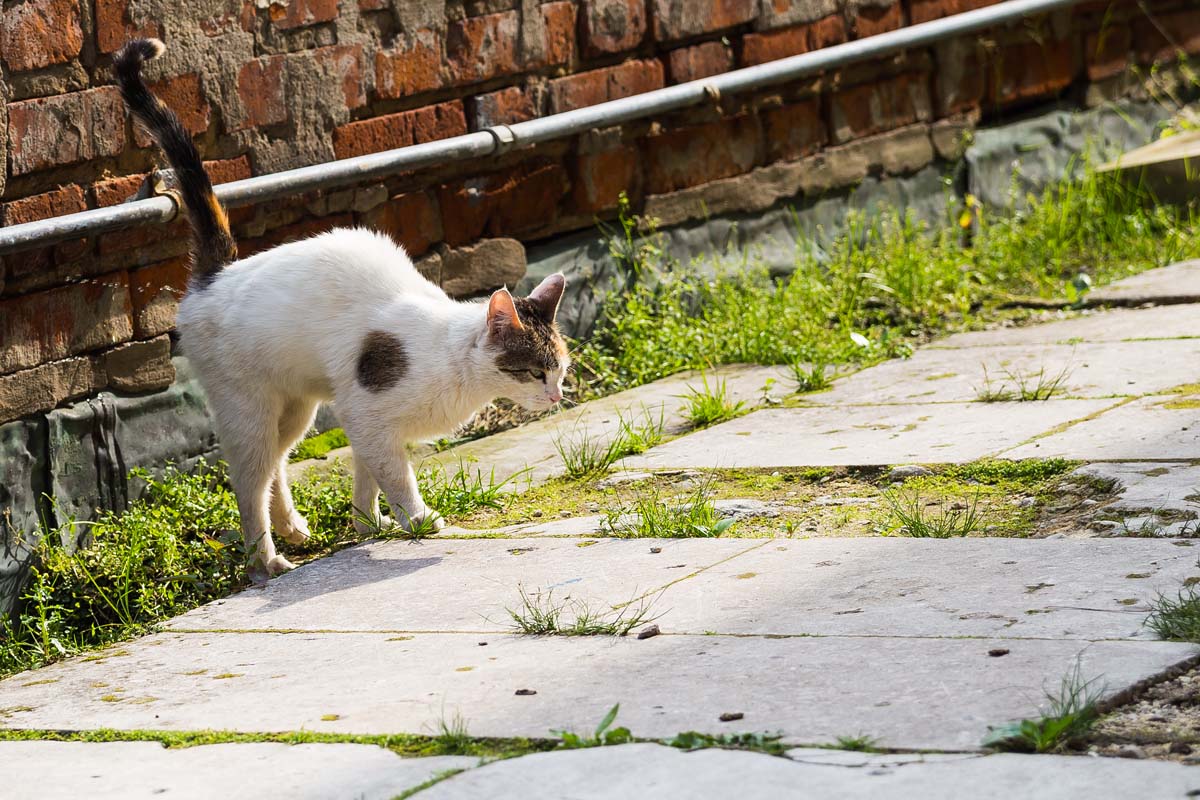
13. Ascending Realms: Vertical Territory for Feline Majesty
In the spatial choreography of a feline kingdom, the caregiver becomes an architect of vertical realms—crafting elevated landscapes that offer not just physical elevation but also a profound sense of security and control. Tall cat trees, shelves strategically affixed to walls, or perches positioned with purpose become the vertical tapestry upon which the cat can navigate their world with regal grace.
Cat trees, reaching towards the ceiling, become arboreal sanctuaries where the feline can ascend to survey their kingdom from on high. Shelves, arranged in carefully designed configurations, transform walls into vertical canvases where the cat can traverse with feline finesse. Perches, placed strategically to overlook key territories, become watchtowers that grant the cat a panoramic view, instilling a sense of mastery and control over their domain.
The caregiver, in their role as a spatial designer, understands that vertical territory is not merely a physical dimension; it’s a psychological sanctuary. By providing these elevated spaces, the caregiver acknowledges the feline’s instinctual need for vantage points, where they can observe, retreat, and assert their feline sovereignty. In this ascendant realm, the caregiver becomes a curator of elevated experiences, ensuring that the living space is not just horizontal but also vertical—a multi-dimensional landscape that caters to the feline’s need for both security and control.
14. The Rhythmic Symphony: Routine and Consistency in Feline Life
In the symphony of a feline’s daily life, the caregiver assumes the role of a conductor, orchestrating a rhythmic cadence that resonates with the soothing notes of routine and consistency. From feeding and playtime to the meticulous cleaning of the litter box, maintaining a harmonious schedule becomes the melodic heartbeat that guides the cat through the symphony of daily living.
Consistency becomes the nurturing balm that calms the feline’s innate need for predictability. Feeding times, observed with clockwork precision, become anchors of reassurance for the cat, creating a dependable rhythm that aligns with their internal clock. Playtime, a dynamic interlude in the day, becomes a scheduled celebration of interaction and joy. Litter box cleaning, approached with unwavering regularity, ensures that the cat’s essential needs are met with diligence.
The caregiver, in their role as a temporal maestro, understands that routine is not just a matter of convenience; it’s a vital component in the feline’s sense of security. By adhering to a consistent schedule, the caregiver communicates a language of predictability and reliability, fostering an environment where the cat can navigate their daily life with serene confidence.
In this rhythmic symphony, the caregiver becomes a conductor of reassurance, ensuring that the cat’s daily experiences are marked by the soothing cadence of routine and consistency. By harmonizing the temporal dimensions of the feline’s world, the caregiver not only provides a framework for daily living but also creates a comforting melody that resonates with the cat’s need for stability and predictability.
15. Serene Continuity: Minimizing Disruptions in Feline Territory
In the choreography of a feline’s habitat, the caregiver becomes a guardian of serene continuity—navigating the delicate balance between the desire for change and the feline’s need for stability. Sudden disruptions, whether in furniture arrangements, litter box placement, or household dynamics, are approached with thoughtful consideration to ensure the cat’s sense of security remains undisturbed. How AI, ChatGPT maximizes earnings of many people in minutes
Furniture, positioned like familiar landmarks in the feline landscape, becomes an anchor of stability. The caregiver, in their role as a custodian of continuity, minimizes abrupt changes in arrangements, recognizing that each piece holds a place in the cat’s spatial memory. Litter box placement, an essential territory, is approached with a strategic mindset, avoiding hasty shifts that might unsettle the feline’s established routines.
Household dynamics, from new additions to changes in routines, are introduced with a mindful cadence. The caregiver becomes a curator of transitions, allowing the feline residents to acclimate gradually to alterations in their shared environment. By minimizing disruptions, the caregiver cultivates an atmosphere of calm continuity, where the cat can navigate their world with a sense of predictability and assurance.
16. The Tapestry of Time: Patience and Understanding in Behavioral Transformations
In the transformative journey of curbing spraying behaviors, the caregiver becomes a weaver of time—a patient artisan crafting the tapestry of behavioral change. Stopping spraying, a nuanced endeavor, requires not just practical strategies but an abundance of patience and understanding. The caregiver, in their role as a steady guide, approaches this process with an unwavering commitment to consistency and resilience.
Patience becomes the gentle hand that guides the caregiver through the evolving landscape of behavioral transformations. The feline, exploring the intricacies of territory and communication, requires time to adapt and respond to the caregiver’s efforts. The caregiver, by embracing patience, acknowledges that behavioral change is not an instantaneous feat but a gradual evolution that unfolds over time.
Understanding becomes the lens through which the caregiver perceives the feline’s journey. Each cat is an individual with unique sensitivities, experiences, and responses. The caregiver, attuned to the subtleties of the feline psyche, exercises empathy and insight. By understanding the cat’s perspective and embracing the nuances of their behavior, the caregiver fosters an environment of mutual trust and cooperation. Motivation – Mind – Success – Thinking – Productivity – Happiness
In this tapestry of time, the caregiver is not just an architect of behavioral change; they are a companion in the feline’s journey toward a harmonious coexistence. By being patient and understanding, the caregiver not only supports the cat’s adaptation process but also creates a foundation of trust that paves the way for lasting behavioral transformations.
17. The Enchanted Indoors: Crafting Stimulating Environments
In the realm of indoor living, the caregiver transforms into a conjurer of enchantment—a creator of stimulating environments that captivate the feline imagination and offer alternatives to the allure of outdoor exploration. Toys, hiding spots, and window perches become the magical ingredients woven into the fabric of the indoor landscape.
Toys, carefully selected to cater to feline instincts, become vessels of joy and play. The caregiver, in their role as an entertainer, introduces a diverse array of toys that stimulate the cat’s physical and mental faculties. Hiding spots, strategically placed, become secret retreats where the cat can indulge in the thrill of concealment and ambush. Window perches, offering panoramic views of the outside world, become elevated observatories that allow the cat to bask in the sights and sounds of the environment. Business – Money Making – Marketing – E-commerce
The caregiver, with an artist’s touch, crafts an indoor haven where the feline residents can revel in the richness of their surroundings. By providing alternatives to outdoor exploration, the caregiver not only mitigates the lure of spraying territories but also fosters a vibrant indoor experience that aligns with the cat’s natural inclinations.
18. Guardians of Boundaries: Cat-Proofing Outdoor Spaces
In the symphony of outdoor exploration, the caregiver emerges as a vigilant guardian, employing cat-proofing measures to delineate and safeguard specific areas where the cat may express territorial behaviors. Blocking access to these identified zones becomes a strategic intervention, minimizing the potential for outdoor spraying while still allowing the cat to enjoy controlled outdoor experiences.
The caregiver, in their role as a boundary guardian, employs physical barriers or deterrents to limit the cat’s access to areas where spraying has become a concern. Fencing, motion-activated devices, or strategically placed obstacles become the tools in the caregiver’s arsenal to communicate the boundaries of permissible territories. By cat-proofing outdoor spaces, the caregiver ensures that the feline’s outdoor adventures are channeled into areas where territorial marking is less problematic. Health books, guides, exercises, habits, Diets, and more
In this outdoor stewardship, the caregiver becomes a custodian of harmony, balancing the feline’s innate desire for exploration with the necessity of boundary setting. By cat-proofing specific outdoor areas, the caregiver creates a nuanced landscape where the cat can revel in the wonders of the outside world while maintaining the integrity of the shared living space.
19. Diplomatic Measures: Addressing Local Cat Populations with Humane Deterrents
In the delicate diplomacy of shared territories, the caregiver becomes a mediator, addressing the potential stressors posed by neighboring cat populations. Outdoor cats, contributing to your cat’s anxiety, prompt the caregiver to explore humane deterrents—a thoughtful approach that fosters harmony without resorting to aggression.
Humane deterrents, ranging from motion-activated devices to natural repellents, become the tools in the caregiver’s diplomatic arsenal. The caregiver, in their role as a peacekeeper, strategically employs these measures to discourage outside cats from encroaching on your cat’s territory. Motion-activated sprinklers, emitting gentle but effective deterrents, become guardians of the perimeter. Natural repellents, like citrus scents or plant-based barriers, convey messages of unwelcome without causing harm. RPM 3.0 – 60% CONVERSION & Money for Affiliate Marketing
By addressing local cat populations with humane deterrents, the caregiver not only protects their cat’s sense of security but also contributes to a harmonious coexistence within the shared neighborhood. In this diplomatic dance, the caregiver becomes an advocate for peaceful boundaries, ensuring that the feline residents can navigate their outdoor realms without undue stress.
20. Heartfelt Connections: Fostering a Positive Relationship with Your Cat
In the intimate sphere of feline companionship, the caregiver becomes a weaver of heartfelt connections—a builder of bonds that transcend mere cohabitation. Focusing on building a strong, positive relationship with your cat becomes a central tenet in this relational endeavor, where affection, playtime, and understanding become the threads that intertwine to form a tapestry of trust. Fitness – Meditation – Diet – Weight Loss – Healthy Living – Yoga
Affection becomes the language through which the caregiver communicates love and reassurance to the feline companion. Through gentle strokes, warm words, and shared moments of closeness, the caregiver establishes a foundation of trust that forms the bedrock of a positive relationship. Playtime, a dynamic interlude in the daily routine, becomes a shared celebration where the cat’s playful instincts are engaged and their need for interaction is fulfilled.
Understanding, the empathetic bridge between the caregiver and the cat, becomes the guiding principle in fostering a positive relationship. The caregiver, attuned to the nuances of feline behavior, respects the cat’s individual preferences, sensitivities, and communication cues. By understanding the cat’s needs, the caregiver tailors their interactions to create an environment where the feline feels secure, valued, and understood. Cat accessories on Amazon
In this relational symphony, the caregiver is not just a provider of essentials; they are a companion in the cat’s journey through life. By fostering a positive relationship through affection, playtime, and understanding, the caregiver becomes a source of emotional security, enriching the feline’s daily experiences and contributing to a bond that transcends the confines of mere ownership.
Remember, each cat is unique, and what works for one may not work for another. Be patient, and consistent, and consult your veterinarian or animal behaviorist for tailored advice.
Other Interesting Articles
- How to Stop A Cat from Spraying after Neutering: 11 Tips
- How to Tell if A Cat is in Pain from Arthritis: How to Help
- 14 Reasons Why Is My Cat Making Weird Purring Noises
- How to Take Care of A Kitten without A Mother: 21 Tips
- What Is Caterwauling? 10 Most Common Reasons Cats Do It
- How to Introduce A Cat To A New Home When Moving?
- Cat Declawing: Tips, FAQs, Health, Alternatives, Pros, Cons
- New Cat? 20 Common Warning Signs When Introducing Cats
- 23 Sure Signs Your Cat May Be in Pain and How to Help It
- How to Stop A Neutered Cat From Spraying: 15 Simple Tips
- 12 Signs Your Cat May Require a Feline Companion
- Feline Pheromones: 12 Ways Calming Cat Pheromones Work
- Do Cats Feel Lonely without Other Cats? 6 Signs of Loneliness
- 10 Reasons Why Cats Hiss: How To Stop The Behavior
- Cat Feeding: Tips, Guide, FAQs, Chart for Kittens to Veterans
- Cat Vaccinations: Schedule, FAQs, Side Effects, and Costs
- 44 Strange, Weird, and Random Cat Behaviors Explained
- 21 Pro Tips for Fostering Kittens: Essential Care Guide
- 18 Cat Sounds Your Feline Makes: What They Mean
- Sexing Kittens: How to Tell, Determine the Sex of Your Kitten
